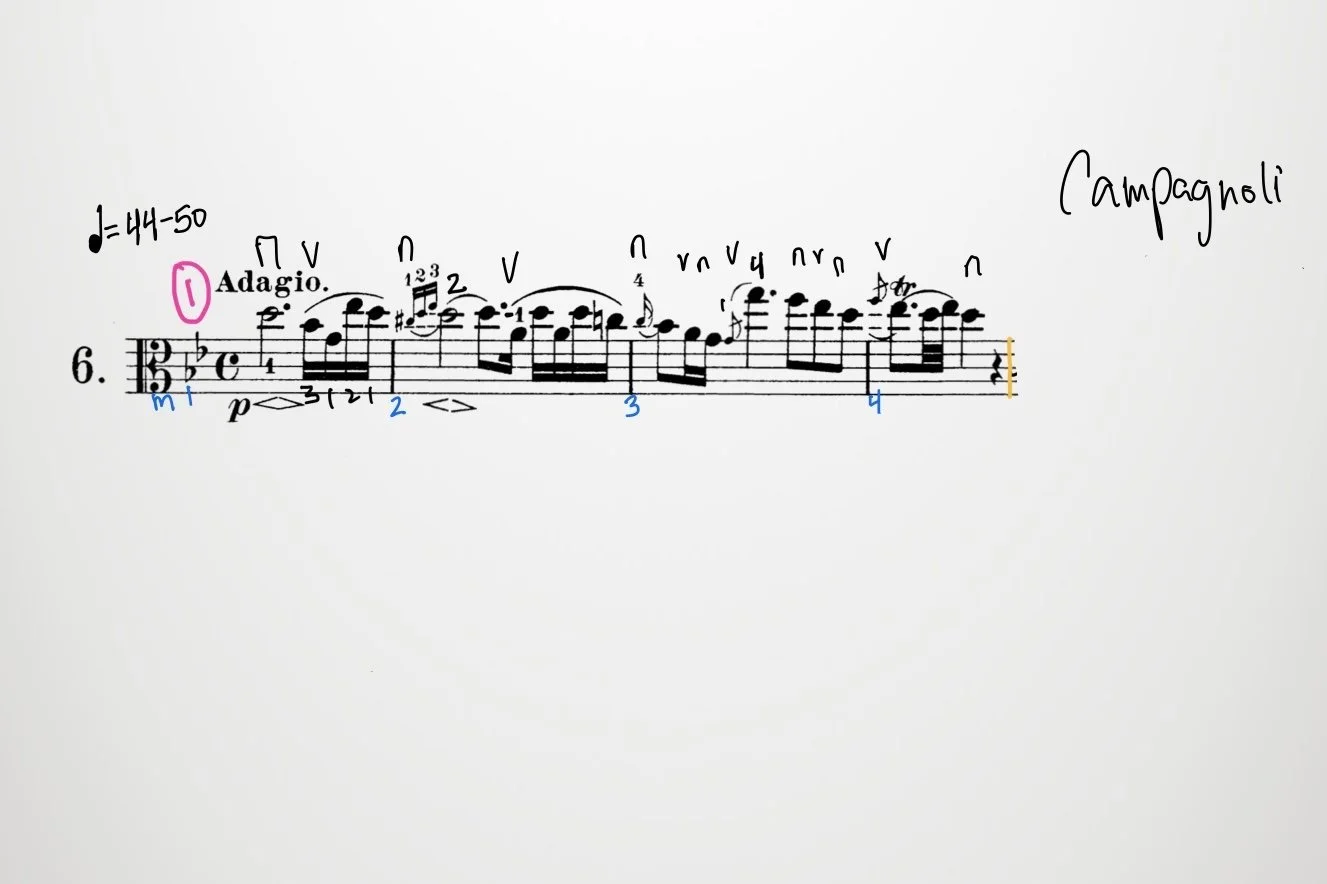IN THIS LESSON
PHRASE 1
MEASURES 1-4
We set the scene for Campagnoli 6 with a somber, pining first phrase. We need the bow control to play slow and beautiful hairpin crescendo/dimenuendos in the first and second measures, both times followed by a much faster and lighter up-bow. Seamless transitions between these bow strokes are crucial, ensuring a continuous, uninterrupted flow of sound.
General Practice Strategies:
Maintain vibrato throughout to enhance relaxation and melodic expression.
Place fingers gently on the strings, feeling contact with the fleshy part of the finger pad to produce a deep, resonant tone.
Approach all shifts smoothly and lyrically, avoiding any abrupt or uneven transitions.
Begin by familiarizing yourself with the hand positions in each position and practice shifting between them fluidly and expressively.
To master the rhythm, practice subdividing the bow strokes; for instance, play with a 16th-note subdivision.
Consider the vibrato you choose for this phrase. Each hairpin can be emphasized by gradually speeding up the vibrato to warm the note. In measures 3 and 4, consider singing with a somewhat slow vibrato.
Breaking Down the Phrase & Reference Guide to Previous Exercises:
Measure 1:
All played in g minor in 3rd position, crossing to the D string.
Measure 2:
Downbeat 1-1 shift from D (3rd position) to C# (2nd position), chromatic hand frame.
Shift to 1 on A (4th position)
Measure 3:
Finger replacement shift on downbeat, from 3 on C (4th position) to 4 on C (3rd position) - remain in 3rd position.
Measure 4:
Starting on the grace note F, trill from Eb to F. This is a slow trill, fitting the weighty, somber character of the moment.
Use a light-weight whole bow on the final note of this phrase, so we are ready for the next phrase at the tip.
